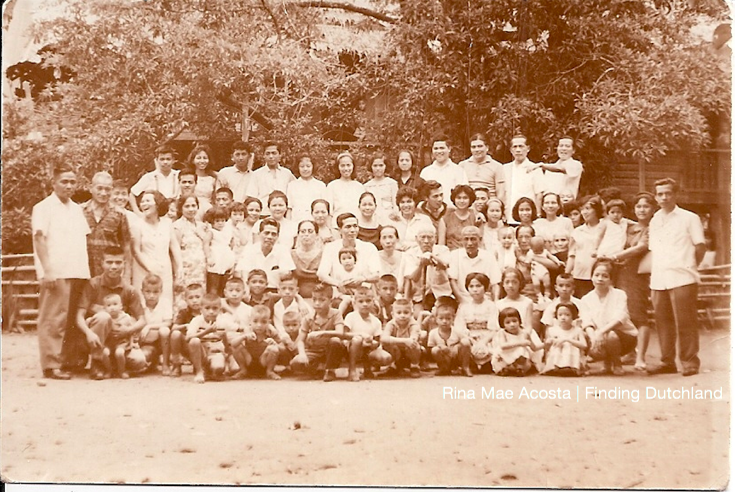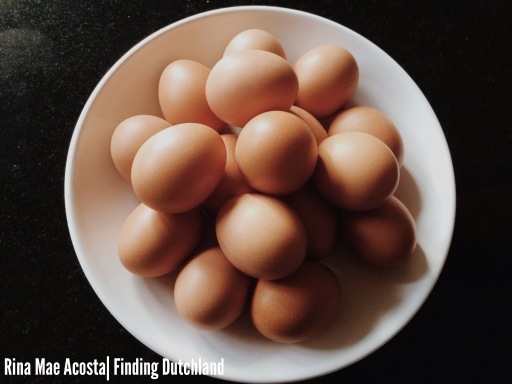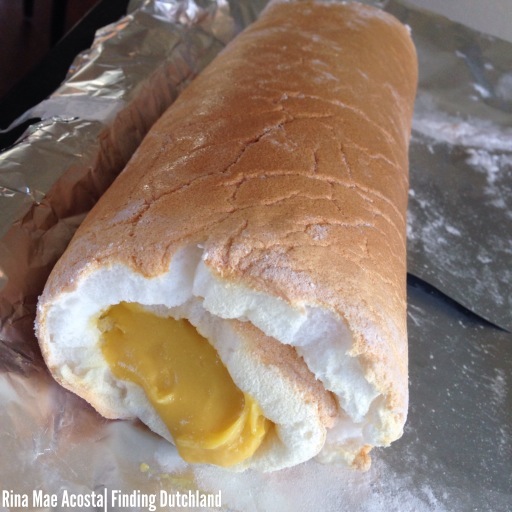
I’m a nostalgic person. Or perhaps, more accurately, a sentimental fool. I love looking at photos of my family’s nearly forgotten past. This photo was taken for an annual family reunion according to my father’s foggy recollection. Ironically, it’s also one of the last taken as waves of family members would immigrate to the United States.
I start making up stories in my head, tying up all the pieces of fragmented memories my father and relatives recall about their Philippines and the pictures that history books portray of that time. It was the Philippines of the 1950s and 1960s when hard-working, industrious and educated middle-class families thrived under a progressive economy. My great grandfather Silverio Acosta became mesmerized by the American dream and instilled those seeds of unadulterated ambition and promise of a better life in his children. Fifty-four years and five generations later, not a single relative is left in the Philippines.
These are the stories, dilemmas, and thoughts that come to my mind when I’m in the kitchen, my own refuge where I try to experiment and ambitiously try to replicate traditional Filipino recipes. I imagine the good old days in the province – what life was like for my great great grandmother Isabel, her husband Saturino, their 8 children and grandchildren (the people in the picture). I wonder what the family reunion was like, and I can’t help but let my imagination get the better of me.
Around 5pm, the perfect nostalgic hour between lunch and dinner when the sun is still out but no longer insufferable, the entire family would gather in the living room. The eldest son would start playing Malinak Lay Labi on the piano and in traditional Filipino fashion, everyone else would gather in song. And of course, they would all be enjoying a merienda (afternoon tea). On this particular evening, the ambrosial Brazo de Mercedes takes center stage, delighting everyone to their heart’s content.
By baking Brazo de Mercedes and other Filipino treats in my own kitchen, I hope to recreate snapshots of family memories in the Philippines. It’s my way of teaching my son about our Filipino culture. After all, food is the language of heritage. And I have my heart set on mastering the art of speaking it.

Arguably the most decadent and cherished Filipino dessert is Brazo de Mercedes, a pillowy, fluffy meringue filled with a thick, rich yema custard and rolled into a log. Brazo de Mercedes essentially means “the arms of Mercedes (Our Lady of Mercy)” in Spanish. It’s a dessert that evokes a warm, sweet embrace in the arms of a loving mother. Or possibly a dessert that has romantic insinuations. Regardless of what connotation the dessert has, it’s sure to evoke some kind of emotion, which isn’t surprising. After all, the Philippines is the most emotional country in the world.
Brazo de Mercedes is best served with coffee or tea for merienda. Taking a bite of Brazo de Mercedes is like having a piece of sunshine, a perfect way for everyone in the colder parts of the world to keep warm until the promise of spring and summer finally comes around.
Brazo de Mercedes Recipe
This is my modified recipe for Brazo de Mercedes made especially for my 22 month old son in mind. I’m also convinced that the universe conspires to help you along the way. One of my closest friends Rhea was kind (and patient enough) to teach me how to make this beloved dessert.
For the custard
1/2 cup sweetened condensed milk
1 teaspoon vanilla essence
2 tbsps. unsalted butter
1/4 cup of water
10 egg yolks
For the meringue
16 egg whites
1 teaspoon cream of tartar
1/2 cup white sugar
1 teaspoon vanilla essence
Confectioner sugar for decorating
Additional butter to grease the parchment paper
Preparation
Pre-heat the oven to 175 C (350 F) and line a 14 x 16 cookie sheet with greased parchment paper.
Separate the egg yolks from the whites.
Using a whisk, combine the sweetened condensed milk, vanilla extract, butter and water in a mixing bowl over a double boiler using low heat. Gradually add one egg yolk (10 total) at a time and continue stirring the mixture to prevent curdling. Keep stirring until the mixture has the consistency of custard. This will take approximately 15-20 minutes. A sign that the custard is ready is that the mixture will stick to the whisk. Once done, remove from the heat source and set aside.
Using an electric stand mixer (Kitchen Aid), whisk the egg whites, vanilla essence and cream of tartar until soft peaks form. Gradually add the sugar and whisk until the meringue forms firm, glossy stiff peaks. Proceed with caution not to overmix the meringue.
Evenly spread the meringue mixture on the lined cookie sheet. Bake in the pre-heated oven until browned, approximately 15 minutes. The meringue will puff up a bit while being baked and it will deflate once removed from the oven.
While the meringue is baking, prepare another sheet of parchment paper and sift confectioner’s sugar over it.
Remove the meringue from the oven and invert it onto the prepared parchment paper. Gently peel away the parchment paper on top. Spread the custard evenly on 3/4 of the cooked meringue (brown side). Roll the meringue tightly into a log.
Best served on the same day it is made.


